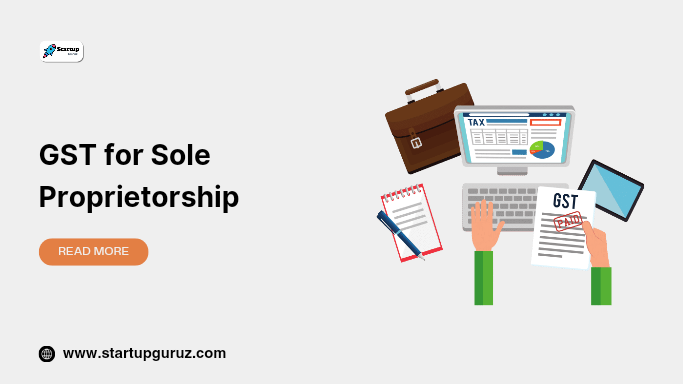GST for Sole Proprietorship
GST for Sole Proprietorship: Understanding Taxation for Single-Owned Businesses
Introduction to GST for Sole Proprietorship
Goods and Services Tax (GST) is an indirect tax levied on the supply of goods and services in India. It has replaced many indirect taxes that were previously imposed by the Central and State governments. GST has simplified the taxation process and brought about uniformity in tax rates across the country. For sole proprietorships, understanding GST is essential as it impacts their business operations and compliance requirements.

How Does GST Work for Sole Proprietorships?
As a sole proprietorship, your business is treated as one with its owner. This means that for GST purposes, your business income is considered your personal income, and you are liable to pay tax accordingly. Here’s how GST works for sole proprietorships:
- GST Registration: If your business turnover exceeds the threshold limit set by the government, you are required to register for GST. This registration process involves obtaining a unique GST identification number (GSTIN) for your business.
- GST Collection: Once registered, you need to collect GST on the supply of goods and services to your customers. This collected GST is known as output tax.
- GST Payment: After collecting GST from your customers, you must pay the applicable GST to the government. This amount is known as input tax credit.
- Input Tax Credit (ITC): As a registered business, you can claim credit for the GST paid on your purchases (input tax) against the GST collected from your customers (output tax). This helps in reducing the overall tax liability.
- Filing GST Returns: Sole proprietorships are required to file various GST returns, including GSTR-1 for outward supplies, GSTR-3B for monthly summary returns, and GSTR-9 for annual returns. Timely and accurate filing of these returns is crucial to avoid penalties.
Benefits of GST for Sole Proprietorships
- Simplified Tax Structure: GST has replaced multiple indirect taxes with a single, unified tax regime, making compliance easier for sole proprietorships.
- Input Tax Credit: Sole proprietorships can claim input tax credit on their purchases, reducing the overall tax liability and improving cash flow.
- National Presence: With GST, businesses can operate seamlessly across state borders without facing different tax rates or compliance procedures.
- Digital Integration: GST is a digitally-driven tax system, promoting transparency, efficiency, and ease of doing business for sole proprietorships.
FAQs about GST for Sole Proprietorships
- Do I Need to Register for GST as a Sole Proprietorship?
- If your aggregate turnover exceeds Rs. 20 lakhs (Rs. 10 lakhs for special category states), GST registration is mandatory.
- What is the Composition Scheme for Sole Proprietorships?
- Sole proprietorships with a turnover of up to Rs. 1.5 crores can opt for the composition scheme, which offers simplified compliance and lower tax rates.
- Can I Claim Input Tax Credit (ITC) on Business Expenses?
- Yes, you can claim input tax credit on GST paid for business-related expenses, subject to certain conditions.
- What are the Penalties for Non-Compliance with GST Regulations?
- Non-compliance with GST regulations may attract penalties ranging from fines to cancellation of GST registration.
- How Often Do I Need to File GST Returns?
- GST returns, such as GSTR-3B and GSTR-1, are typically filed on a monthly or quarterly basis, depending on your turnover.
- Is GST Applicable on Export of Goods or Services?
- No, exports are considered zero-rated under GST, meaning no GST is charged on export transactions.
- Can I Amend or Cancel my GST Registration?
- Yes, you can make amendments to your GST registration details or cancel your registration if you no longer meet the eligibility criteria.
- Are There Different GST Rates for Different Goods and Services?
- Yes, GST rates vary based on the nature of goods and services, with four primary tax slabs: 5%, 12%, 18%, and 28%.
- Do I Need to Issue Tax Invoices for Every Sale?
- Yes, as a registered dealer, you are required to issue tax invoices for all taxable supplies made by your business.
- How Does GST Impact Pricing for Customers?
- GST is typically passed on to customers as part of the selling price of goods or services, leading to higher prices for end consumers.
Conclusion
Understanding GST is crucial for Sole Proprietorships to ensure compliance with tax regulations and leverage the benefits offered by the tax system. By registering for GST, collecting and paying taxes, and filing timely returns, sole proprietorships can streamline their business operations and contribute to India’s growing economy.